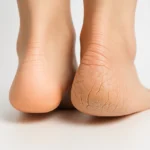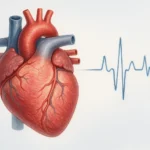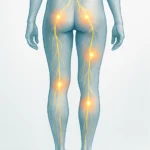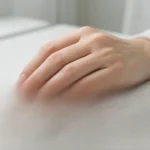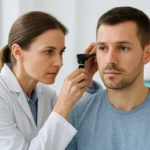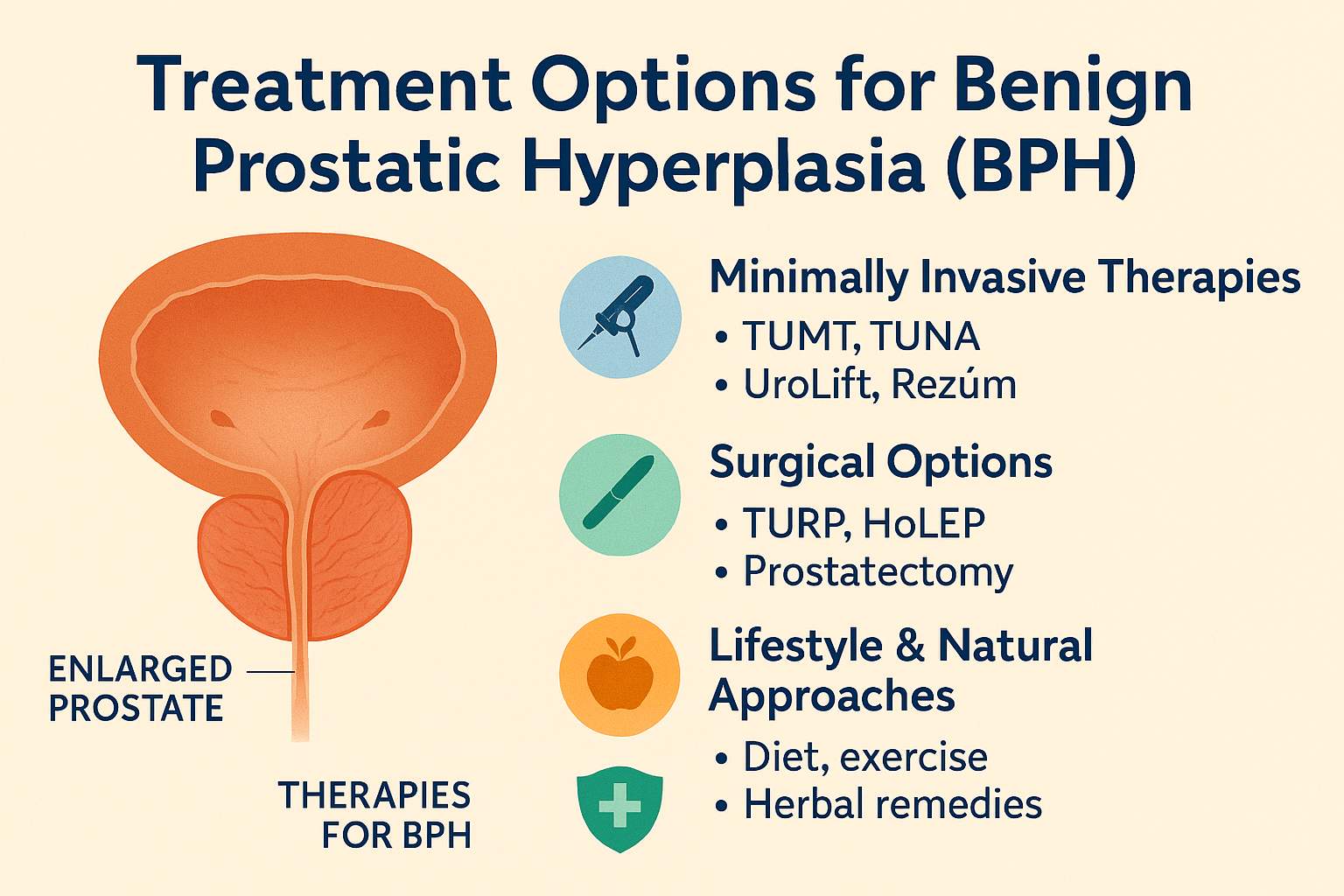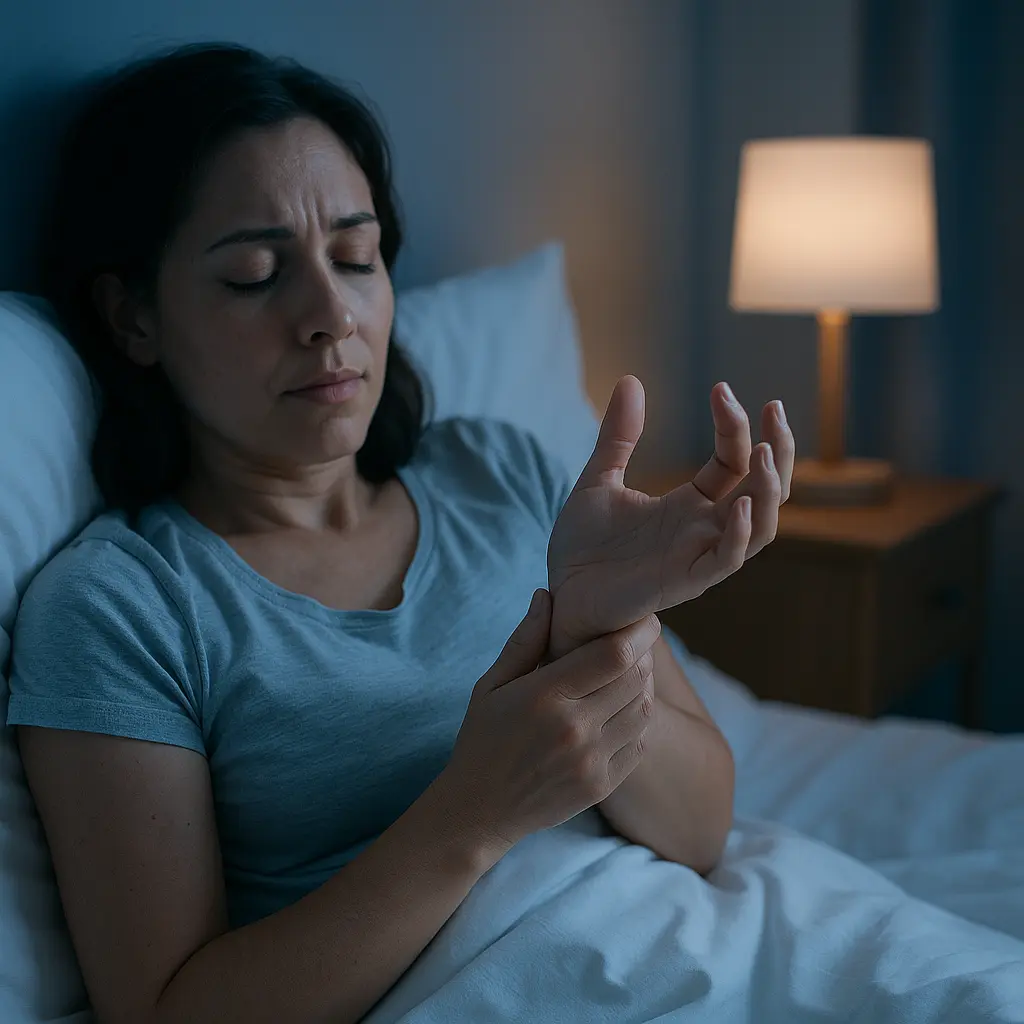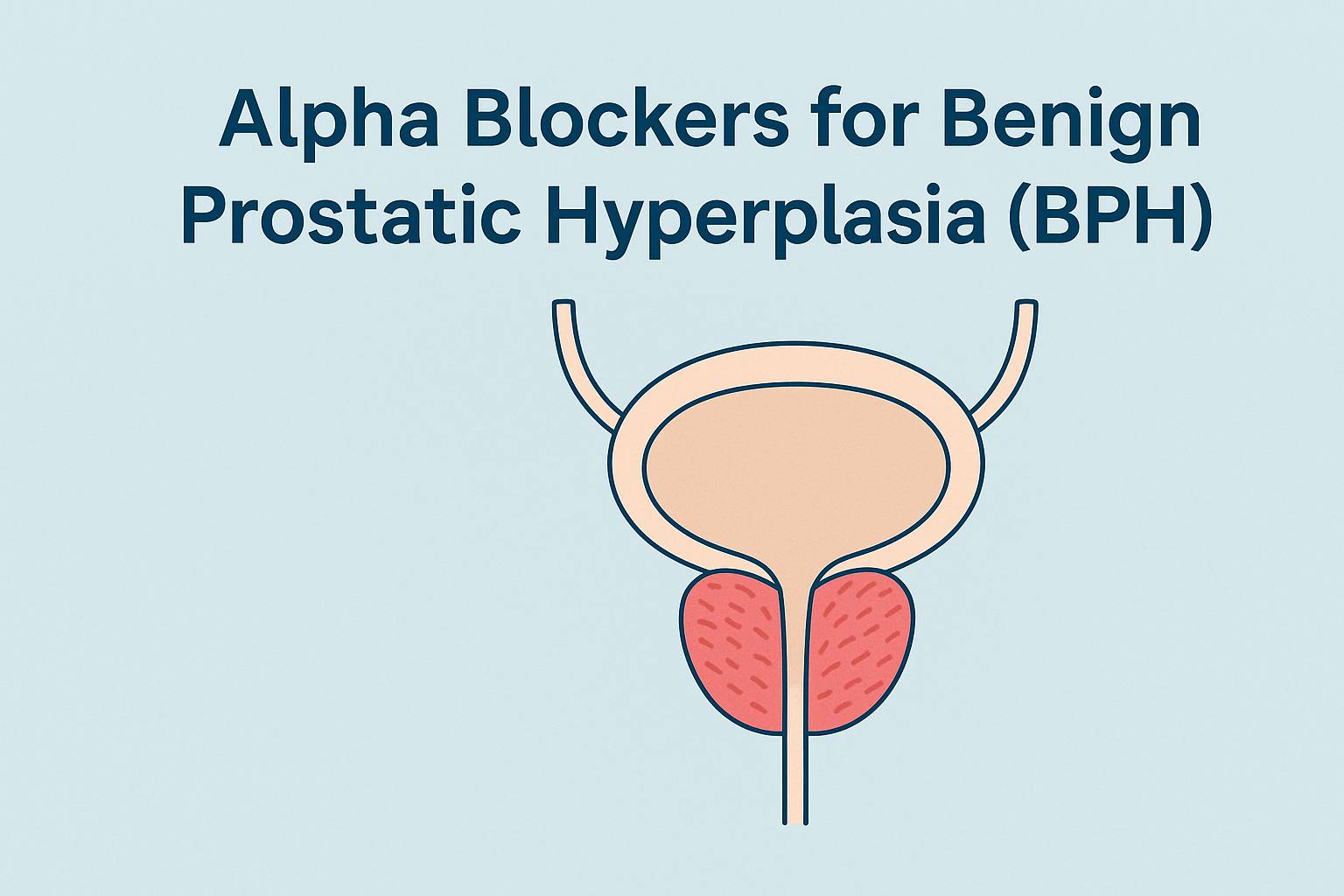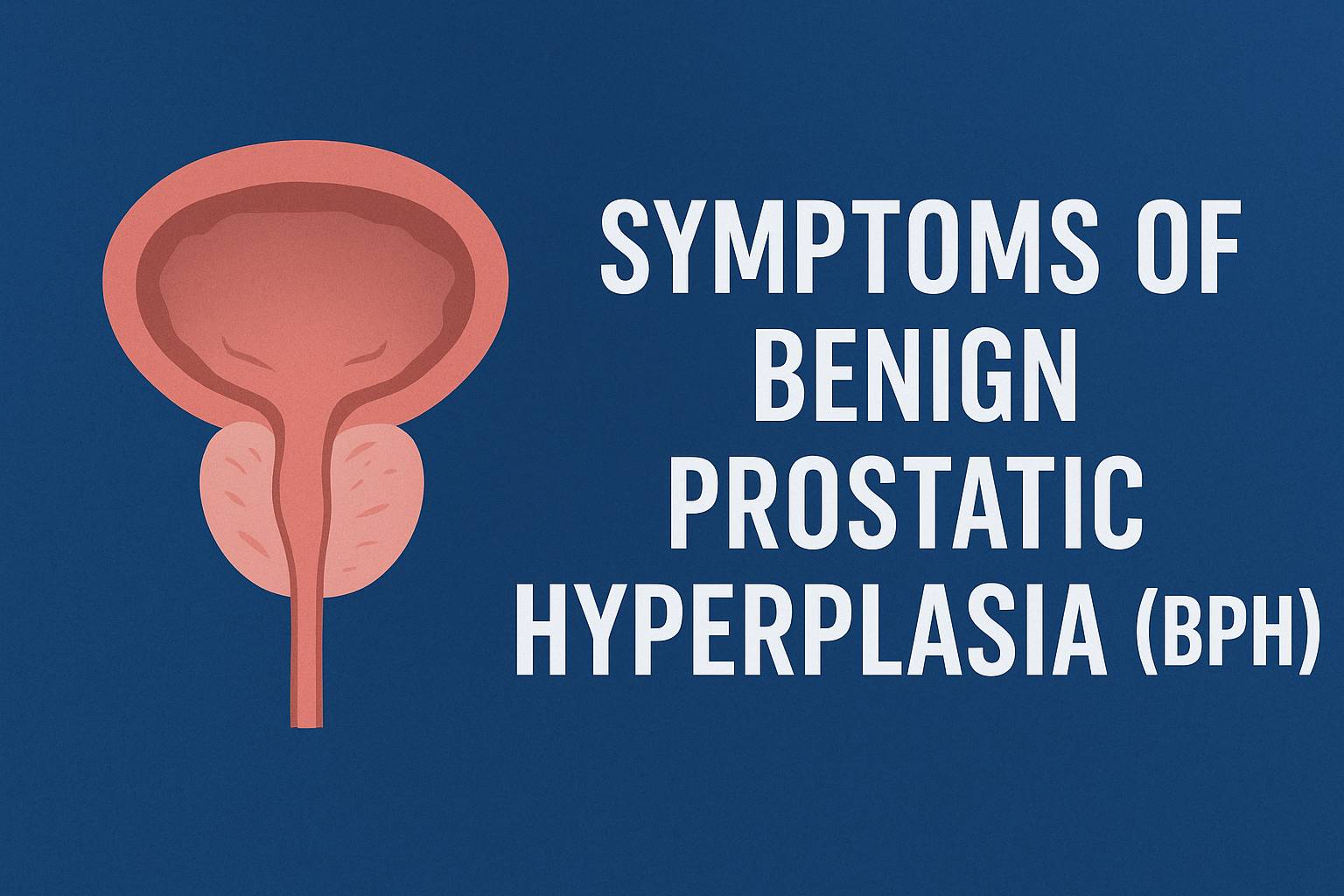
Treatment Options for Benign Prostatic Hyperplasia (BPH)
“In my 15 years of clinical practice, I have met many men who delayed treatment for an enlarged prostate because they hoped symptoms would go away on their own. But when urination becomes difficult or frequent nighttime trips interrupt sleep, it is a clear sign that professional care is needed. In this guide, I will explain the main benign prostatic hyperplasia treatment options, from minimally invasive therapies to surgery and lifestyle changes.”
Benign prostatic hyperplasia (BPH), or enlarged prostate, often causes symptoms like frequent urination at night, weak urine flow, and the constant urge to empty the bladder. These changes can disrupt sleep, reduce daily comfort, and gradually affect overall quality of life.
Fortunately, there are several proven benign prostatic hyperplasia treatment options. From minimally invasive procedures and surgery to lifestyle adjustments and natural remedies, today’s therapies for BPH allow doctors to create a plan tailored to each patient’s needs.
Why Treatment for BPH Is Needed
Many men delay seeking help for benign prostatic hyperplasia, hoping the problem will resolve on its own. In reality, ignoring the condition can allow symptoms to worsen and increase the risk of complications. Understanding why timely therapies for BPH matter is the first step toward protecting urinary and overall health.
Risks of leaving an enlarged prostate untreated
Without treatment, an enlarged prostate continues to press on the urethra and block urine flow. This can lead to bladder infections, stones, or even kidney damage when urine backs up. Sudden urinary retention, when a man cannot pass urine at all, often becomes a medical emergency.
In my practice, I have seen men who delayed care and ended up needing urgent surgery instead of simpler procedures. Early benign prostatic hyperplasia treatment lowers these risks and helps maintain a healthy urinary system before serious problems develop.
When lifestyle changes are no longer enough
At first, small adjustments — drinking less caffeine, limiting fluids before bed, or staying active — may ease symptoms. These steps are helpful, but they cannot stop the prostate from gradually enlarging.
When men still wake up several times a night, strain to pass urine, or feel that the bladder never empties, it signals that lifestyle habits are no longer sufficient. At this point, doctors recommend moving toward medical enlarged prostate treatment options, such as minimally invasive therapies or surgery.
Minimally Invasive Therapies for BPH
For men who want relief from urinary symptoms but wish to avoid major surgery, several minimally invasive therapies for BPH are available. These procedures reduce the size of the prostate or open the urinary channel with less recovery time than traditional operations.
Transurethral microwave therapy (TUMT)
TUMT uses targeted microwave energy to heat and destroy overgrown prostate tissue. A thin catheter delivers the energy directly, shrinking the gland and easing pressure on the urethra. The procedure is done in an outpatient setting, usually without general anesthesia.
Patients often experience mild burning or urgency for a short time after treatment, but symptoms typically improve within weeks. In my experience, TUMT can be a good benign prostatic hyperplasia treatment for men with moderate symptoms who are not ready for surgery.
Transurethral needle ablation (TUNA)
TUNA relies on radiofrequency energy delivered through tiny needles placed in the prostate. The heat generated destroys excess tissue and clears the passage for urine flow. Like TUMT, it can be performed without hospitalization.
While recovery is generally quick, some men report temporary blood in the urine or mild discomfort. TUNA is not as commonly used today as newer methods, but it remains a safe and effective enlarged prostate treatment option for select patients.
Prostatic urethral lift (UroLift) and Rezūm therapy
The UroLift system holds the prostate lobes apart with small permanent implants, physically opening the urethra without removing tissue. Rezūm therapy, on the other hand, uses steam to destroy excess cells, and the body gradually absorbs the treated tissue.
Both options allow patients to return to daily activities within days. They preserve sexual function better than many older procedures, which makes them attractive choices for younger men. In clinical practice, these benign prostatic hyperplasia treatments offer durable symptom relief with minimal downtime.
Surgical Options for Enlarged Prostate (BPH)
When minimally invasive methods don’t provide enough relief, surgery offers durable results. These enlarged prostate treatment options remove or vaporize obstructing tissue to restore urine flow and protect the bladder and kidneys.
TURP (Transurethral Resection of the Prostate)
Surgeons insert a scope through the urethra and shave away excess prostate tissue using an electrical loop. TURP quickly opens the urinary channel and remains a benchmark benign prostatic hyperplasia treatment for moderate to large glands.
Most men stay in the hospital for a short period and go home with a catheter for 1–3 days. Common issues include temporary burning, urgency, or blood in the urine. Retrograde ejaculation is frequent; significant bleeding or low-sodium “TURP syndrome” is rare with modern techniques.
Laser procedures (HoLEP, GreenLight laser)
HoLEP (holmium laser enucleation) shells out the obstructing tissue and removes it from the bladder; GreenLight photovaporizes tissue in place. Both approaches create a wide channel with less bleeding than traditional surgery and work well for men on blood thinners.
Recovery tends to be fast: shorter catheter time and earlier return to daily activities. Temporary urgency or leakage can occur, especially after HoLEP on very large glands, but symptoms usually improve over weeks. For many patients, these laser therapies for BPH deliver durable relief with minimal downtime.
Prostatectomy: when surgery becomes necessary
When the prostate is very large or when complications develop (recurrent retention, bladder stones, severe obstruction), surgeons perform a simple prostatectomy (open, laparoscopic, or robotic). This operation removes the inner adenoma and leaves the outer capsule, which is different from cancer surgery.
Hospital stay and catheter time are longer than after TURP or lasers, but flow improvement is dramatic. Risks include bleeding, infection, and retrograde ejaculation; most men regain continence after recovery. For select cases, this remains one of the most definitive enlarged prostate treatment options.
Lifestyle and Natural Approaches
Not every man with BPH needs immediate surgery or a device-based therapy. For mild symptoms, lifestyle strategies and natural remedies can support urinary health and improve daily comfort. These steps often complement other therapies for BPH and give patients more control over their condition.
Diet changes and managing daily habits
Reducing caffeine, alcohol, and late-evening fluid intake helps limit nighttime urination. Adding more vegetables, fruits, and whole grains supports bladder health and lowers inflammation. Small changes like scheduled bathroom visits can reduce urgency and improve confidence.
In practice, these habits rarely shrink the prostate itself, but they lessen symptom impact. Men who commit to consistent diet and routine adjustments often delay the need for invasive benign prostatic hyperplasia treatments.
Exercise and pelvic floor training
Regular physical activity improves circulation, hormone balance, and weight control, all of which affect prostate health. Low-impact workouts such as walking or swimming reduce urinary symptoms over time.
Pelvic floor exercises (Kegels) strengthen the muscles that control urination. When done correctly, they decrease leakage and give better bladder control. These approaches are safe, accessible, and valuable additions to other enlarged prostate treatment options.
Herbal and alternative remedies (saw palmetto, beta-sitosterol)
Saw palmetto and beta-sitosterol are plant-based supplements often used for urinary health. Some men report reduced frequency and stronger urine flow after trying them. Research results are mixed, but these options remain popular worldwide.
I often remind patients that supplements may help mild symptoms but cannot replace medical care if the prostate keeps enlarging. Used under guidance, herbal remedies can complement mainstream therapies for BPH, but they should not delay proven treatments when symptoms worsen.
Comparing Different BPH Treatments
With several benign prostatic hyperplasia treatments available, men often wonder how to choose the best path. Comparing effectiveness, side effects, recovery, and costs helps patients and doctors make decisions that fit medical needs and personal priorities.
Effectiveness of each method
Lifestyle changes ease mild symptoms but rarely stop progression. Minimally invasive therapies like UroLift or Rezūm work well for moderate obstruction and preserve sexual function. TURP and laser surgeries deliver the strongest, most durable results, especially for larger prostates.
No single therapy suits everyone. In my practice, I match the enlarged prostate treatment options to prostate size, health conditions, and patient goals. A younger man may value sexual preservation, while an older patient may seek maximum flow improvement.
Possible side effects and recovery times
All treatments carry some risks. Minimally invasive procedures usually cause temporary urgency, burning, or blood in the urine, with recovery in days. TURP and laser surgery require short hospitalization but improve flow quickly; sexual side effects like retrograde ejaculation are more common.
Prostatectomy has the longest recovery but offers lasting relief for very large glands. Discussing these trade-offs helps men choose the therapies for BPH they feel most comfortable with.
Costs and insurance coverage
Lifestyle changes and supplements are the least expensive, though results vary. Minimally invasive therapies and laser procedures may cost more up front, but shorter recovery can reduce indirect costs like time off work.
Most insurance plans cover established benign prostatic hyperplasia treatments such as TURP, laser therapy, and prostatectomy. Coverage for newer options like UroLift or Rezūm can differ, so checking benefits in advance avoids unexpected expenses.
How Doctors Decide on the Best Treatment
Choosing the right approach is not about one single “best” therapy. Urologists weigh medical facts, lifestyle goals, and patient preferences before recommending specific benign prostatic hyperplasia treatments. This personalized plan increases both safety and long-term satisfaction.
Patient age, health status, and prostate size
Younger men often prefer options that preserve sexual function, while older patients may prioritize reliable urine flow. Prostate size also matters: minimally invasive therapies suit smaller glands, while very large prostates may require surgery.
Overall health shapes the decision as well. Men with heart disease, diabetes, or those taking blood thinners may do better with laser therapies for BPH, which involve less bleeding than TURP.
Lifestyle factors and personal preferences
Some men want the fastest recovery to return to work, while others accept longer downtime if the procedure promises lasting relief. Sexual side effects are a major consideration, especially for men still planning intimacy.
In my consultations, I ask patients about their routines, expectations, and tolerance for risk. Matching enlarged prostate treatment options to lifestyle improves compliance and outcomes.
Follow-up and monitoring after therapy
No matter which treatment is chosen, regular follow-up is essential. Doctors monitor urine flow, residual bladder volume, and prostate size to ensure the therapy works as intended.
Long-term care prevents complications and detects recurrence early. Even after successful procedures, ongoing check-ups help men maintain health and adapt if symptoms return. This continued monitoring makes benign prostatic hyperplasia treatment a process, not a one-time event.
FAQ About BPH Treatments
“As a physician, I know how disruptive urinary symptoms from an enlarged prostate can be. Many men hope the problem will fade, but waiting often makes treatment harder. My advice is simple: if frequent urination, weak flow, or nighttime trips affect your life, talk to a doctor. Early evaluation opens the door to effective benign prostatic hyperplasia treatments and gives peace of mind.”
